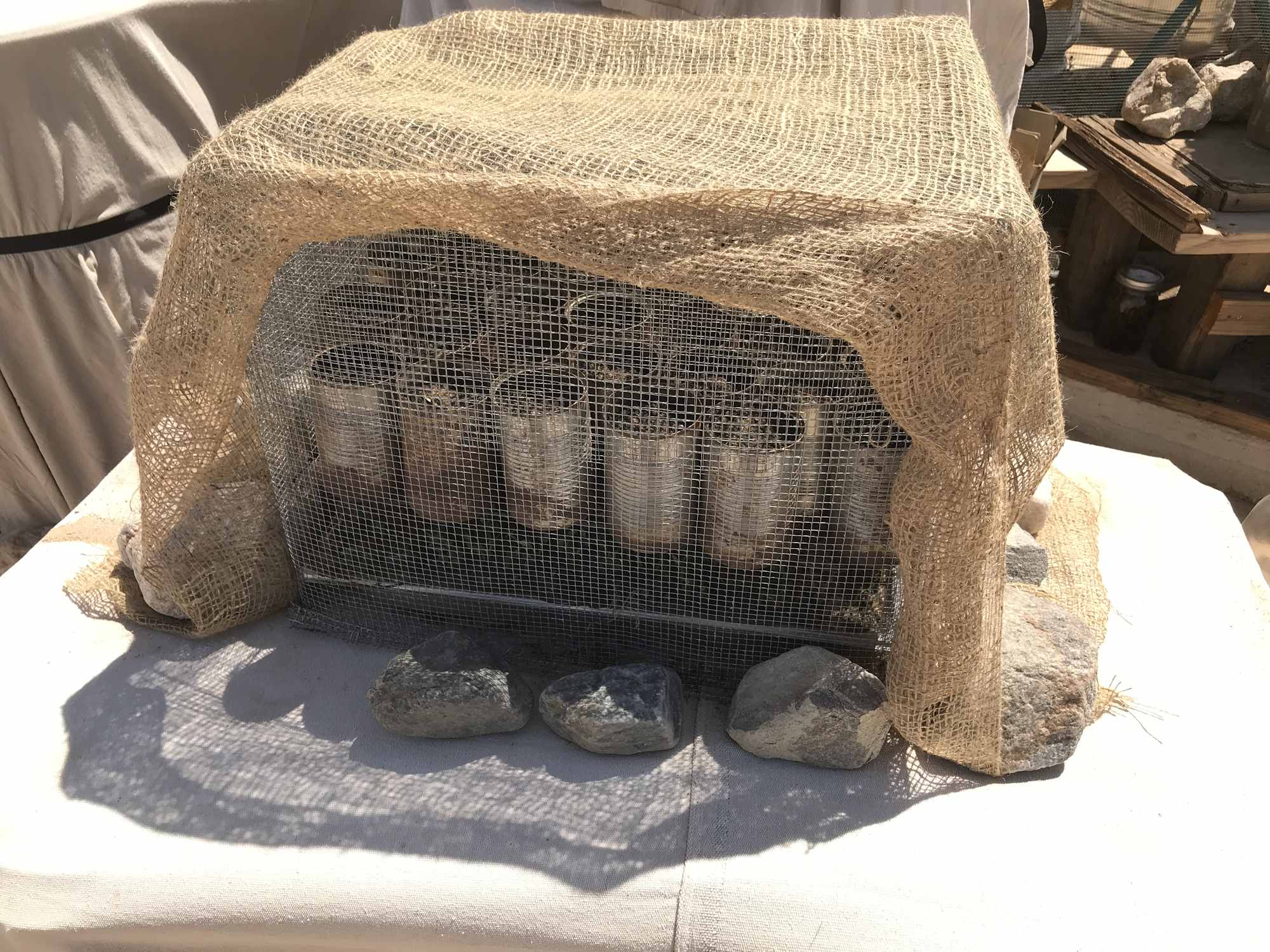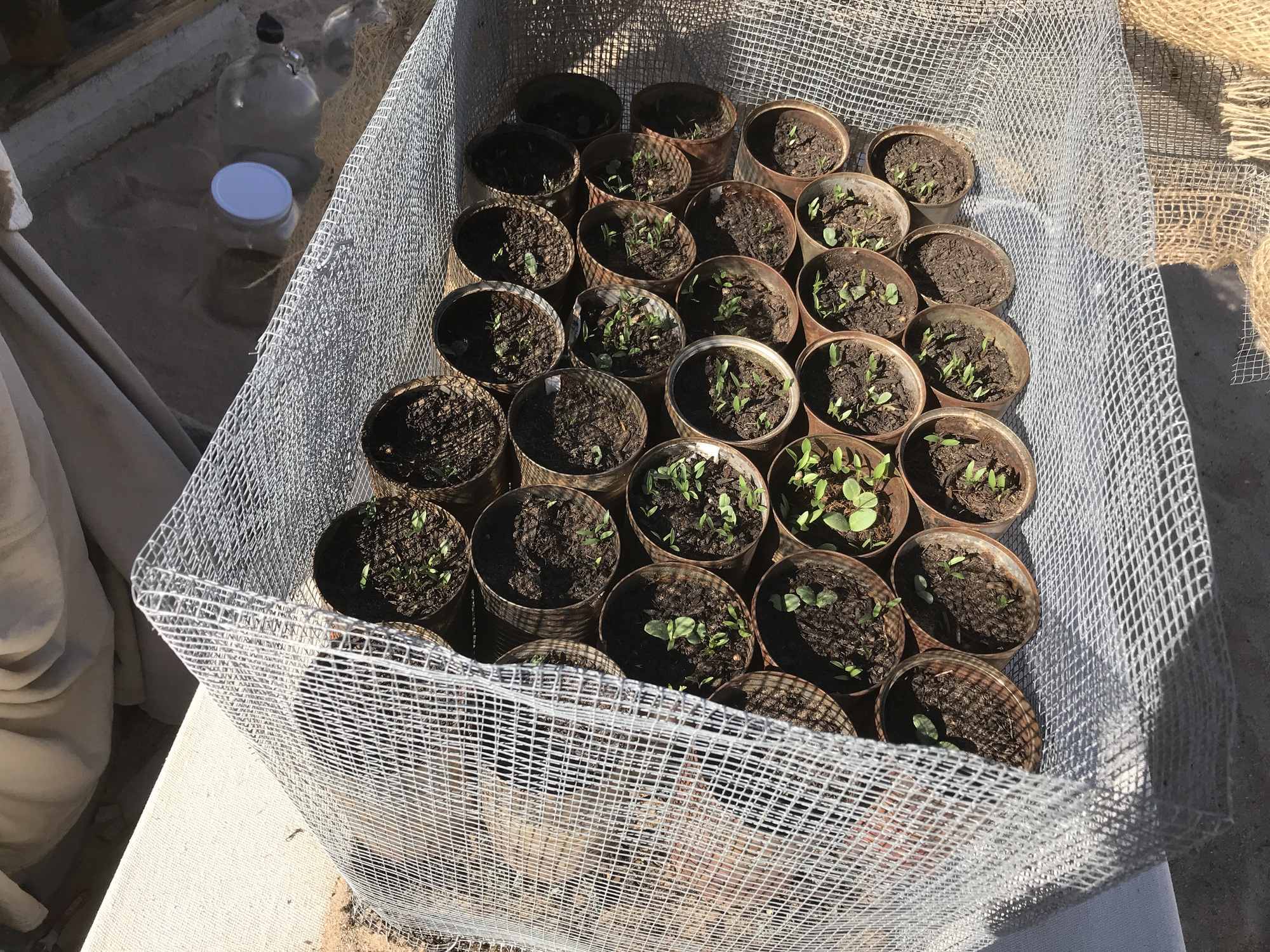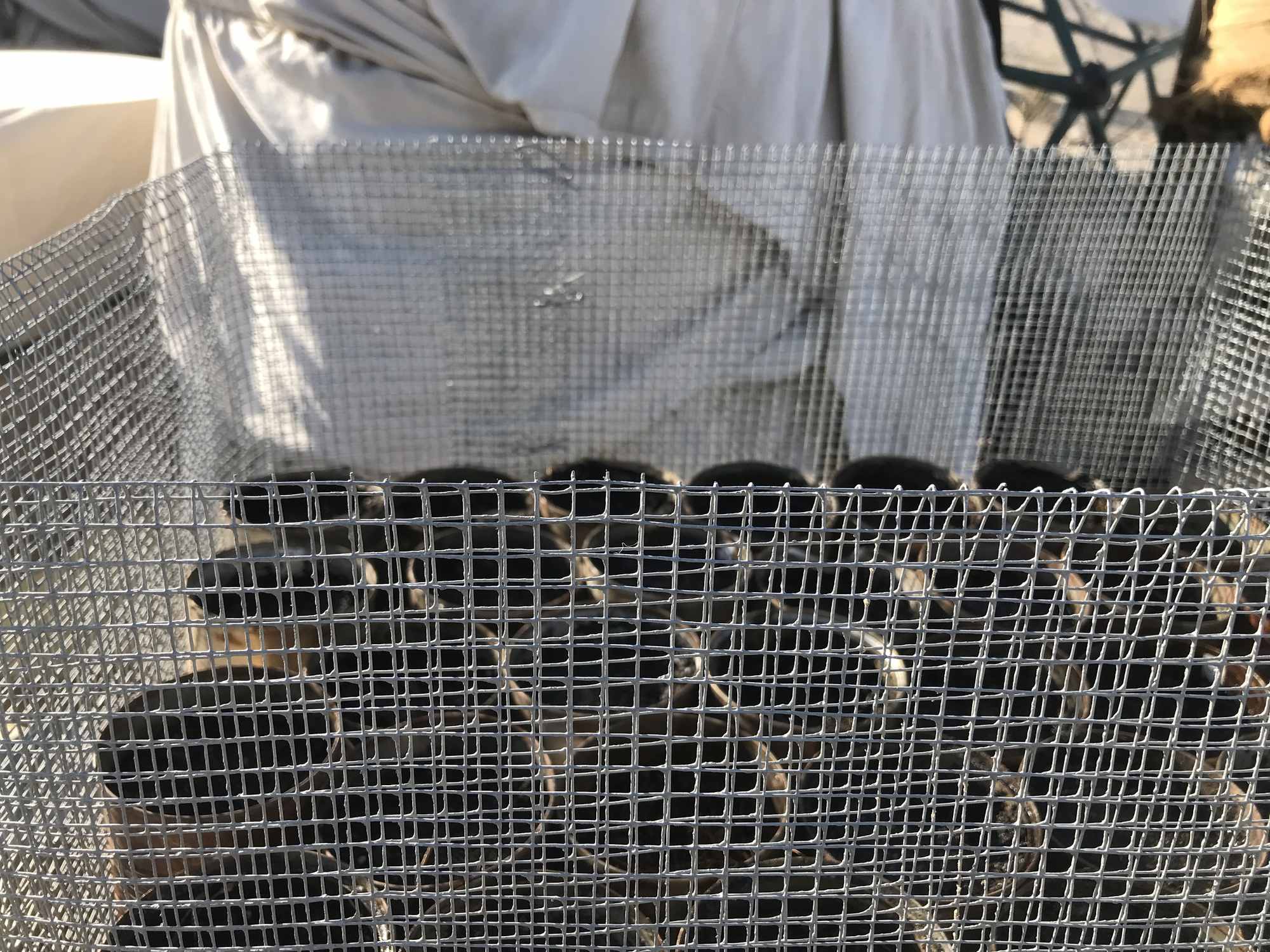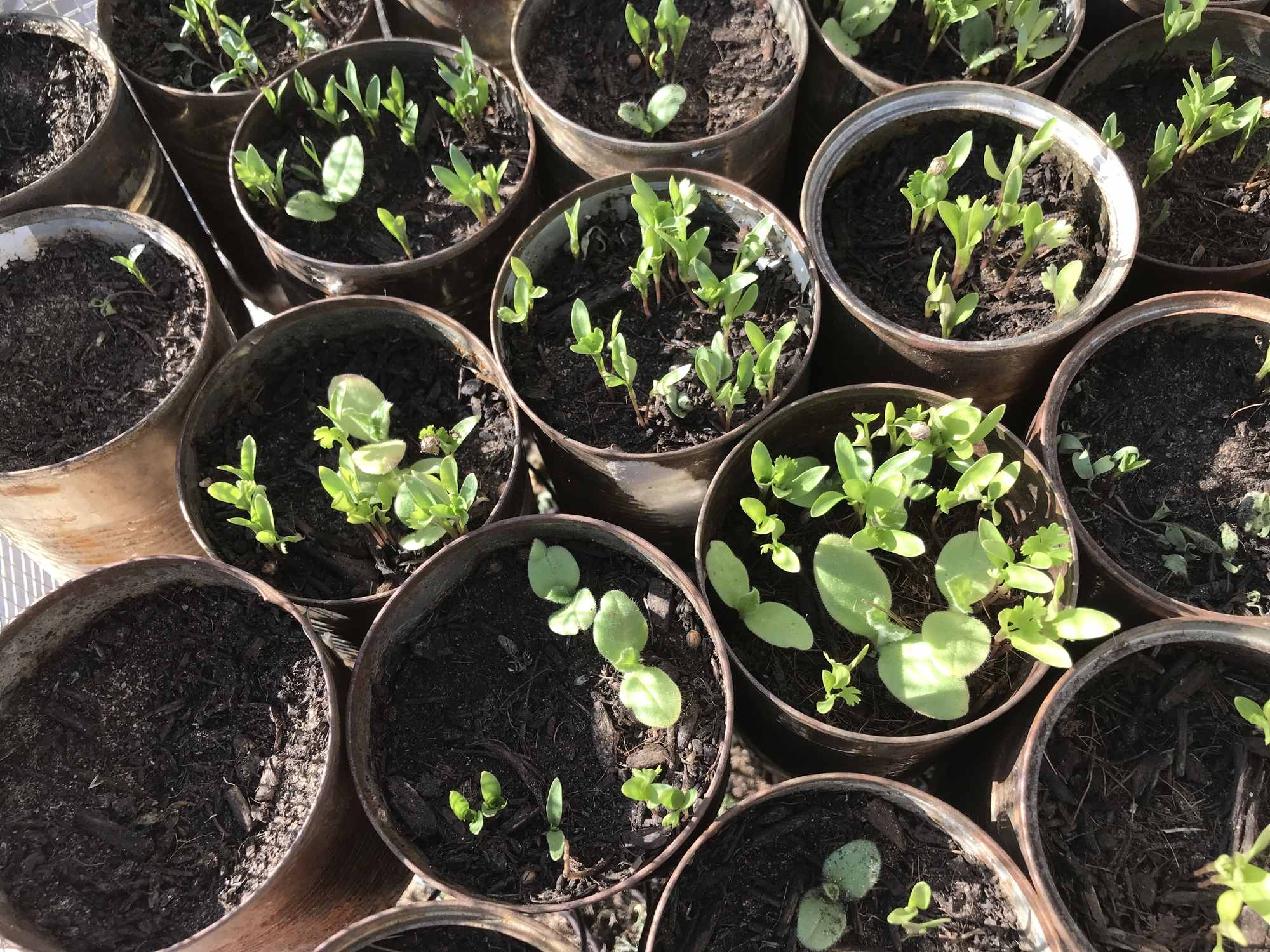



Burlap Shade Cloth Over Quarter Inch Hardware Cloth Mesh Soup Can Nursery Box
For many years as a low and no budget urban gardener, I'd always been excited to find any object that could be rescued and salvaged from the waste stream, repurposed and upcycled in the garden. While I always tried to avoid the most noxious of materials, I've used road cones, rubber tires, plastic tote bins, tubs, and trays, plastic sheeting, tarps, and countless other harmful, non-biodegradable items. It always felt like a justifiable means to an end, a sort of scaffolding of trash to build the fully natural and organic ecological architecture of the future.
In contrast with the rest of the city-scape, many of these objects didn't feel like much of an eye-sore. However as I worked my way through the "ranks" of the professional permaculture design movement and had the good fortune to work on coastal, hillside, and rural properties of "blue sky" budget clients, my aesthetic and ecological health standards began to naturally heighten. It's surprising how much more expensive it can be to go non-toxic. Most off-the-shelf garden and landscape supplies anymore are partially if not completely made of plastic and other harmful materials. To go with all natural, biodegradeable materials is almost always a significant premium cost.
While I've designed and installed project sites with many a high ticket item that complies with a more aesthetically pleasing and ecologically healthy non-toxic sensibility, I've always retained my resourcefulness and kept an eye on the wastestream for materials.
This simple design of a 1/4 inch hardware cloth framed box enclosure, with a salvaged stainless steel catering food tray at the base, bottom perferated soup cans as the seedling pots, and a burlap shade canopy cover, exemplifies a compromise in aesthetics without a compromise in ecological integrity. While it's not the prettiest sight, it's far better than anything plastic, and if you're into a rustic old-timey Americana or apocalyptic wasteland aesthetic like me, than it's a plus not a minus that it's a bit, in a word, (pre-plastic) trashy.
The fact is, it gets the job done. Some of the parts are ubiqitous in the wastestream, some are a rare find, some are more or less fabricated and manufactured, some are less energy intensive than others to produce. The common theme though is that, for a d-i-y small secure, durable, desert rain and sand storm worthy system, it works quite well. The soup cans will be the first to corrode away as they are the least fortified against corrosion, but they'll continue to do their job for a long time even as they begin falling apart. Their remnants will be both nutritive to the ecosystem, non-toxic, and with a bit of careful handling, not much of a hazard.
The hardware cloth will last much longer as it's the least in contact with constant moisture, and in the desert climate, even bare metal takes a long time to corrode given the aridity.
The stainless steel tray will last a very long time, though it's life span will be shortened by the continuous use.
The burlap shade cover may last forever or only a season depending on how much wind gets up and under it. I've found that it stays naturally snug against even the slightest jagged edge of the hardware cloth so needs basically no fastening.
The pieces of the box are fastened together by tough and long lasting electric fencing wire.
I expect to get many years of rodent and bird proofed plant nursery seedling cycles out of this little box, and it was almost no expense.
This is a pattern I'll continue to repeat across many types of projects, wire, hardware cloth, soup cans...so many applications from hardware and tool racks, to craft supply organizers, and beyond.